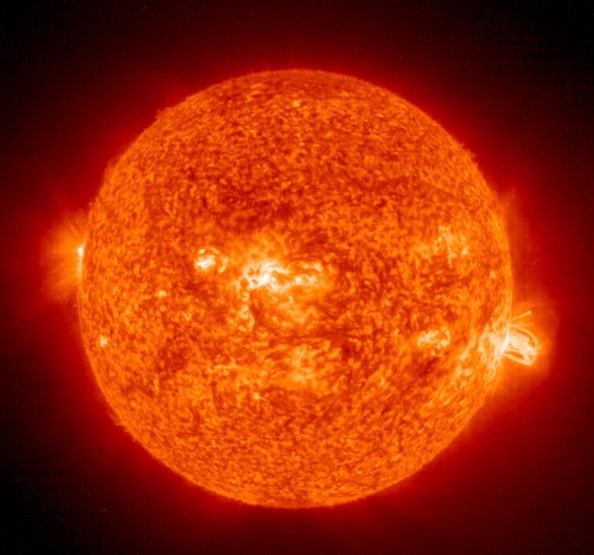As the sun's new cycle begins, its activities picked up. It has been recorded that the bright star emitted a powerful flare on Thursday. Nasa's Solar Dynamics Observatory captured an extreme ultraviolet flash as a result of the eruption of Sunspot AR2929, which produced a massive M5.5-class solar flare.

Radio Blackout over Indian Ocean
Spaceweather.com reports that an X-ray pulse ionized Earth's upper atmosphere during the flare, resulting in a shortwave radio blackout in the Indian Ocean region. On or below 30 MHz there have been reports of unexpected propagation effects by local pilots, sailors, and amateur radio operators.
Active regions on the Sun are known to produce solar flares due to the sun's high magnetic fields.
Sunspot groups are the most common cause of solar flares, which occur in active regions on the Sun where high magnetic fields are present. Magnetic fields can become unstable and release energy in many forms as they evolve, according to India Today.
If the huge amounts of energy trapped in the Sun's magnetic field is suddenly release, it causes a solar flare, a swift and violent explosion on the Sun's surface. In the wake of the explosion, radiation is hurled towards the planets of the solar system. Radio waves, x-rays, and gamma rays are all present in these radiations.
Stages of a Solar Flare
A solar flare has three stages: first, the precursor stage, in which mild X-ray emissions stimulate the release of magnetic energy.
The second stage is called impulsive, while the X-rays' steady accumulation and depletion is the third stage.
M-class eruptions, like the one that occurred on Thursday, have a moderate size. Short-term radio blackouts may occur in the Earth's polar regions as a result of these phenomena. After an M-class flare, minor radiation storms can occur.
Possible Geomagnetic Unrest
According to spaceweather.com, a series of Coronal Mass Ejections could cause geomagnetic disturbances on January 22-23-24.
Despite the fact that none of them will directly impact the globe, the combination of the three could cause modest G1-class geomagnetic storms.
Solar wind energy is efficiently transferred into Earth's magnetosphere during a geomagnetic storm, resulting in a large-scale perturbation of Earth's magnetosphere.

Effects of Solar Flare
If a massive solar flare were to occur, not all of its effects would be harmful. The Earth's upper atmosphere becomes denser when these things happen. For a brief time, the atmosphere climbs in altitude.
In addition to potentially posing problems for satellites, this could change the orbit of space debris. This trash could tumble into orbit and burn up because of the additional drag.
The increased visibility of auroras for Earthlings living nearer the equator is another potential benefit. Solar particles smash with gas particles in the atmosphere to produce the northern and southern lights.
At the poles, where the magnetic field is weaker, this tends to occur. More of the particles reach Earth's atmosphere during solar flares. During the October solar storm, the Aurora borealis was seen in New York City.
Related Article : Solar Storm Warning: Massive Geomagnetic Solar Flare is Set to Hit Earth
For more news, updates about solar flares and similar topics don't forget to follow Nature World News!
© 2025 NatureWorldNews.com All rights reserved. Do not reproduce without permission.





